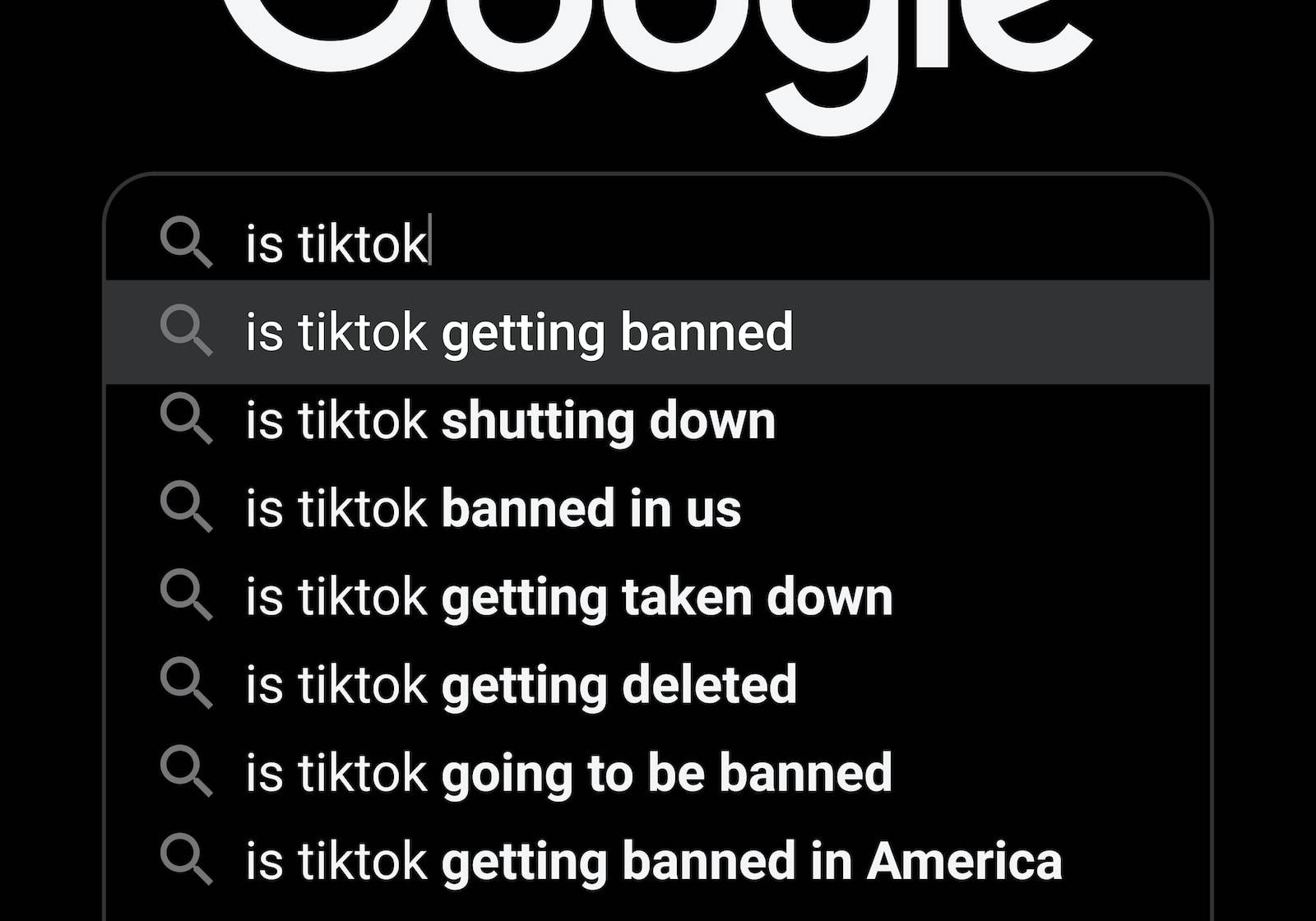In an era where the digital landscape is not just a part of our world but a pivotal cornerstone, understanding and navigating this domain is more crucial than ever.
The digital frontier is vast, continuously evolving, and presents endless opportunities for those who know how to harness its potential. This is where our journey begins.
Welcome to “Maximizing Your Digital Presence: A Comprehensive Guide to Successful Marketing Strategies,” a meticulously crafted resource designed to empower businesses, entrepreneurs, and marketers in the digital sphere.
This guide is not just a pathway to understanding digital marketing; it’s a blueprint for thriving in an increasingly digital-centric world.
At the heart of this endeavor is ZINC Digital, a beacon of innovation and expertise in the digital marketing landscape. ZINC Digital has established itself as a leader in the field, not just by understanding the digital world but by shaping it.
Our approach combines cutting-edge technology, in-depth market insights, and a creative touch that transforms standard marketing strategies into extraordinary success stories.
ZINC Digital is more than just a digital marketing agency; it’s a hub of creativity, analytics, and strategic thinking. We pride ourselves on staying ahead of the curve, constantly adapting to the ever-changing digital landscape, and, most importantly, helping our clients achieve measurable success in their digital endeavors.
This guide is a reflection of ZINC Digital’s ethos – a commitment to excellence, innovation, and tangible results.
Kirk Musick, MS, MBA
Whether you’re a seasoned marketer or just starting, “Maximizing Your Digital Presence” is designed to equip you with the tools, knowledge, and insights necessary to navigate the digital frontier successfully.
As you turn these pages, prepare to embark on a journey that will change the way you view digital marketing. Let’s unlock the full potential of your digital presence together.

Digital marketing, a term synonymous with the modern business environment, encapsulates a range of strategies and tactics employed to promote brands and products through digital channels.
This encompasses the internet, mobile devices, social media, search engines, and other digital platforms, reflecting a significant shift from traditional marketing methods.
The essence of digital marketing lies in its ability to connect businesses with potential customers where they spend much of their time: online.
With an array of strategies like email marketing, social media marketing, content marketing, and search engine optimization, digital marketing stands as a pivotal component in contemporary marketing efforts.

SEO, the backbone of digital marketing, isn’t just about tweaking a website; it’s about crafting an online presence that search engines love and users find valuable. It’s a meticulous process that goes beyond keywords and tags; it’s about understanding your audience, delivering what they seek, and making your website an authoritative resource in your industry.
SEO isn’t a one-time fix; it’s an ongoing strategy. It involves continuous analysis, adaptation, and optimization to align with the ever-evolving algorithms of search engines like Google. It’s a blend of technical prowess and creative finesse, where optimizing the structure, content, and performance of your website plays a pivotal role.
Quality content reigns supreme in SEO. It’s not just about flooding pages with keywords but creating content that answers users’ questions, addresses their pain points, and engages them authentically. Valuable content earns trust and keeps visitors coming back.
SEO isn’t just for bots; it’s for people. User experience is a crucial part of SEO—how easily users can navigate your site, its loading speed, mobile responsiveness, and overall usability significantly impact search rankings.
Link building is another cornerstone. It’s about earning credible links from other websites, showcasing your site’s authority and reliability. It’s not just about quantity; quality and relevance matter more.
For businesses targeting local markets, local SEO becomes essential. Optimizing for local searches involves strategies like claiming your Google My Business listing, getting local citations, and ensuring consistency across online directories.
SEO success isn’t just a gut feeling; it’s measurable. Metrics like organic traffic, click-through rates, bounce rates, and keyword rankings provide valuable insights into the effectiveness of your SEO strategies. Constant analysis helps in fine-tuning and improving.
The SEO landscape is ever-changing. Staying updated with the latest trends, algorithm updates, and best practices is crucial to staying ahead in the digital race.
In essence, SEO isn’t just about rankings; it’s about delivering value, solving problems, and becoming a trusted resource in the vast online realm. It’s the art and science of making your website not just visible but truly impactful and indispensable to those seeking what you offer.
Pay-per-click advertising is a model where advertisers pay a fee each time their ad is clicked. Essentially, it’s a method of buying visits to a site, as opposed to earning them organically through SEO.
One of the most common forms of PPC is search engine advertising, where ads appear alongside search results, offering a direct way to increase website traffic.
Content marketing is the strategic creation and distribution of relevant, valuable, and consistent content aimed at attracting and retaining a clearly defined audience. The objective here is to drive profitable customer action.
This form of marketing is vital for building brand awareness, providing information to consumers, and generating leads, playing a key role in many digital marketing strategies.
This marketing strategy involves the use of social media platforms such as Facebook, Instagram and YouTube to connect with audiences, build brands, increase sales, and drive website traffic.
It encompasses activities like posting text and image updates, videos, and other content that drives audience engagement, as well as analyzing these interactions and running social media advertisements.
Email marketing involves sending commercial messages to a group of people using email. This versatile tool can be used to promote content, discounts, and events or to direct people toward a business’s website.
The underlying goals of email marketing are to cultivate relationships with potential and existing customers, build loyalty and trust, and enhance brand awareness.
Influencer marketing focuses on leveraging key leaders or influencers in a market to spread a brand’s message. Instead of marketing directly to a large consumer group, businesses engage with influencers who then broadcast the message to their followers.
This method is particularly effective in reaching specific target audiences and leveraging the trust that influencers have built with their followers.
In the digital age, where the competition for attention is fierce, crafting your brand’s online persona is not just about being present; it’s about standing out.
This chapter explores the essential components of building a strong brand identity, establishing consistent messaging across platforms, and utilizing storytelling to forge a deep connection with your audience.
A strong brand identity is the cornerstone of your brand’s online persona. It’s more than just a logo or a color scheme; it’s the essence of what your brand stands for.
To build this identity, you must first understand your brand’s mission, values, and what differentiates it from the competition. This understanding should be reflected in every aspect of your digital presence, from your website design to your social media posts.
Consistency is key in digital marketing. Your brand’s message should be coherent across all digital platforms, whether it’s your website, social media channels, or email campaigns.
This consistency helps in reinforcing your brand identity and ensures that your audience receives the same core message, regardless of the platform they are interacting with. Consistent messaging builds trust and recognition, which are crucial for brand loyalty.
Storytelling is a powerful tool in digital marketing. It humanizes your brand and makes it relatable to your audience. A compelling story can evoke emotions, create a lasting impression, and differentiate your brand from competitors.
When crafting your stories, focus on authenticity, simplicity, and aligning the narrative with your brand values. Remember, successful storytelling connects with the right audience and communicates a clear, consistent brand message.
A great example is the “Think Different” campaign from Apple. It played a significant role in Apple’s turnaround, leading to a substantial increase in sales and market share, and it continues to be remembered as a pivotal moment in advertising, highlighting the importance of brand storytelling and emotional connection
A solid content marketing strategy is vital for effective storytelling and brand building. Here’s how you can create one:
By building a strong brand identity, maintaining consistent messaging, and harnessing the power of storytelling, you can create a compelling online persona for your brand.
This persona, underpinned by a strategic content marketing plan, will not only connect with your audience on a deeper level but also drive long-term success in the digital landscape.

Content marketing, in its essence, is a strategic approach that focuses on creating and distributing valuable, relevant, and consistent content. This approach aims to attract and retain a clearly defined audience, ultimately driving profitable customer action.
Its power lies not just in its ability to engage and inform but also in its capacity to build trust and relationships with the audience, which are crucial for long-term business growth.
The heart of content marketing is the creation of content that is both engaging and valuable to the target audience.
This involves understanding the needs and interests of your audience and producing content that addresses these while also aligning with your brand’s values and objectives.
The content should educate, inform, or entertain the audience, thereby fostering a connection with them. Here’s a detailed look at how to create content that resonates and builds lasting connections with your audience.
Understanding Audience Needs and Interests: Begin by researching your target audience.
What are their pain points, interests, and behaviors? Utilize tools like surveys, social media listening, and market research to gather this information. Creating audience personas can be particularly effective, as it helps visualize the typical users of your products or services, including their challenges, goals, and content preferences.
Aligning with Brand Values and Objectives: Your content should reflect your brand’s core values and contribute to its overall objectives. If your brand stands for innovation, your content should showcase this, perhaps through cutting-edge industry insights or innovative product uses. Always ask, “Does this content embody our brand and move us toward our strategic goals?”
Educational Content: One of the primary goals of content should be to educate your audience. This could be about your industry, your products, or even broader topics that interest them. Educational content positions your brand as a knowledgeable and reliable source, fostering trust.
Informative Content: Stay on top of industry trends, news, and updates, and share this information with your audience. By keeping them informed, you become a go-to resource, which can lead to increased engagement and loyalty.
Entertaining Content: Don’t underestimate the power of entertainment. Content that entertains, whether it’s through humor, storytelling, or creativity, can significantly increase engagement and shareability. It helps in humanizing your brand and making it more relatable.
Content Variety and Formats: Mix different types of content to cater to diverse preferences. Blogs, videos, podcasts, infographics, and social media posts are all effective formats. For instance, a blog post can provide in-depth information, while an infographic can distill complex data into an easily digestible format. Videos can be used for storytelling or demonstrating a product in action.
Consistency and Quality: Ensure your content is consistent in both quality and frequency. Consistency helps build a regular audience and establishes your brand as a reliable content source. Quality should never be compromised, as it reflects directly on your brand’s credibility.
Interactive and User-Generated Content: Engage your audience by creating interactive content like quizzes or encouraging user-generated content. This not only increases engagement but also provides valuable insights into your audience’s preferences.
SEO and Discoverability: Optimize your content for search engines to ensure it reaches your target audience. Use relevant keywords, meta descriptions, and engaging titles. SEO is critical in making your content discoverable to those searching for related topics.
Feedback and Adaptation: Continuously gather feedback on your content and adapt accordingly. Analyze engagement metrics, user comments, and direct feedback to understand what works and what doesn’t. This process of continuous improvement is vital in keeping your content strategy effective and relevant.
To maximize the impact of content marketing, it’s essential to leverage various content formats:
Once content is created, its distribution is crucial. A robust content distribution strategy ensures that your content reaches and resonates with your target audience:
A systematic approach to content marketing involves the following steps:
Content marketing is a potent tool in the digital marketing arsenal. It’s more economical than traditional advertising methods and is effective in generating leads, educating consumers, and creating brand awareness.
By delivering valuable content tailored to the audience’s needs, businesses can establish credibility, engage their audience, and drive customer action, making content marketing an indispensable part of successful digital marketing strategies.

In the current digital climate, social media has become a linchpin for successful marketing strategies. Mastery of social media platforms is essential for businesses looking to expand their reach, engage with their audience, and drive conversions.
This chapter delves into the art of identifying the right platforms for your business, managing social media effectively, and leveraging paid advertising to maximize impact.
Choosing the right social media platforms is critical. The decision should be based on your target audience, the type of content you can create, and your overall marketing goals.
Here’s a snapshot of the top platforms and their suitability for various businesses in 2023:
To effectively manage your social media presence, focus on a few platforms and do them well. Develop a coherent content strategy, engage regularly with your audience, and stay up-to-date with platform-specific trends and features.
Consistent branding and messaging across platforms are crucial. Utilize scheduling tools to maintain a regular posting cadence and analytical tools to understand audience behavior and preferences.
Creating an effective paid social media strategy involves the following:
By understanding these aspects of social media marketing, businesses can effectively utilize these platforms to connect with their audience, enhance their brand presence, and achieve their marketing objectives.
Social media mastery is not just about being present on these platforms; it’s about strategically engaging with your audience and leveraging the unique strengths of each platform to maximize your marketing impact.

Search Engine Optimization (SEO) is an integral part of digital marketing, vital for increasing the visibility and reach of a website in search engine results.
This chapter dives into the intricacies of SEO, including on-page and off-page strategies and the tools and techniques that can enhance a website’s presence in search engine results.
SEO is the process of optimizing a website to increase its visibility in search engine results for searches related to its content, products, or services.
This optimization aims to attract more organic (unpaid) traffic as opposed to paid or direct traffic. SEO is essential because it helps businesses attract potential customers who are actively searching for relevant offerings.
Several tools and techniques are indispensable in enhancing your SEO strategy:
Mastering SEO requires a comprehensive understanding of big data analysis, analytics, technical SEO, on-page and off-page optimization strategies.
By leveraging the right tools and techniques and staying abreast of changes in the SEO landscape, businesses can significantly improve their online visibility, attract more organic traffic, and ultimately achieve their digital marketing goals.
SEO is not a one-time effort but an ongoing process of refinement and adaptation to the ever-changing world of search engines.

Pay-per-click (PPC) advertising is a dynamic and effective digital marketing model where advertisers pay a fee each time their ad is clicked.
This chapter will explore the essentials of PPC advertising, focusing on creating impactful ad campaigns and optimizing ad performance to maximize return on investment (ROI).
PPC advertising allows advertisers to place ads on search engine results pages, social media platforms, and various websites, paying only when a user clicks on their ad.
This model is particularly effective for driving targeted traffic to a website and generating conversions, such as sales or leads.
The most common platforms for PPC are search engines like Google Ads, where ads appear based on keyword bidding, and social media platforms like Facebook and Instagram.
Creating a successful PPC campaign involves several key steps:
Optimizing PPC campaigns is an ongoing process. Key strategies include:
By implementing these strategies and continuously refining your approach based on data and performance metrics, you can maximize the ROI of your PPC campaigns.
Effective PPC advertising involves not only understanding the basics of the platform but also a deep engagement with ongoing optimization and adaptation to changing market trends and consumer behaviors.

Email marketing remains a powerful tool in the digital marketing arsenal, offering direct communication with your audience and excellent ROI.
This chapter will explore how to build and nurture an email subscriber list, craft compelling email campaigns, and leverage personalization and automation for maximum impact.
By integrating these tactics, businesses can create effective email marketing campaigns that resonate with their audience, build lasting relationships, and drive conversions.
The key is to maintain relevance, offer value, and use the tools available for personalization and automation to create a more engaging and efficient email marketing strategy.

In digital marketing, the ability to analyze and optimize campaigns is crucial for achieving the best results and ensuring a high return on investment (ROI).
This chapter delves into the importance of analytics in digital marketing, key metrics to track, and how to make informed decisions based on data analysis.
Analytics provide invaluable insights into the performance of your marketing campaigns. By analyzing data, you can understand how your audience interacts with your content, what strategies are working, and where improvements are needed.
Analytics help in identifying trends and patterns, enabling data-driven decisions that can significantly enhance campaign effectiveness.
Analyzing and optimizing campaigns is a continuous process that requires a commitment to data-driven decision-making.
By effectively tracking key metrics, regularly analyzing campaign performance, and being agile in strategy implementation, businesses can optimize their digital marketing efforts, achieve better results, and ensure a strong return on their marketing investments.

As we reach the conclusion, it’s important to reflect on the journey we’ve taken through the dynamic and multifaceted world of digital marketing.
This guide has provided a thorough exploration of essential digital marketing strategy, from understanding the foundational aspects of digital marketing to the intricate details of SEO, content marketing, and beyond.
We began by delving into the various aspects of digital marketing, including the intricacies of SEO, PPC, and the nuanced world of content marketing.
We highlighted the importance of crafting a compelling online persona for your brand, stressing the significance of storytelling and consistent messaging across platforms.
We also unraveled the complexities of social media, discussing how to choose the right platforms for your business and the art of effective social media management.
The journey continued with an in-depth look at the world of SEO, where we discussed on-page and off-page strategies and the tools needed to improve website visibility.
We ventured into the realm of pay-per-click advertising, uncovering strategies for creating effective ad campaigns and optimizing them for maximum ROI.
Analyzing and optimizing campaigns formed a crucial part of our discussion, emphasizing the significance of data in making informed decisions and the key metrics that businesses should track to measure success.
As you move forward to implement these strategies, begin by assessing your current digital presence and identifying areas for improvement. Develop a strategic plan that aligns with your business goals, and allocate the necessary resources for effective implementation.
Embrace the ethos of continuous learning and adaptation to keep up with the ever-evolving digital marketing landscape. Implement your strategies with precision, measure their performance diligently, and optimize them for improved outcomes.
For personalized assistance and expert guidance, ZINC Digital stands ready to support you. With specialized expertise in digital marketing, ZINC Digital can provide bespoke solutions that cater to your unique business needs.
Whether refining existing strategies or embarking on new marketing initiatives, our team at ZINC Digital is equipped to help you navigate the complexities of digital marketing and achieve your desired business objectives.

ZINC Digital is a premier digital marketing agency dedicated to helping businesses navigate the ever-evolving digital landscape.
Our agency stands at the forefront of digital innovation, offering a suite of services designed to enhance online presence, engage target audiences, and drive business growth.
For more information about our services or to discuss how we can help your business thrive in the digital world, please reach out to us: hello@zincmiami.com
At ZINC Digital, we are committed to delivering results-driven digital marketing solutions tailored to each client’s unique needs.
Contact us today to learn how we can partner with you to achieve your digital marketing objectives and propel your business to new heights.
